Contents
Cherry plum Soneika is a hybrid of Belarusian cherry plum selection. A beautiful productive tree is popular in the country gardens of Belarus and Our Country. Consider the characteristics and conditions of its cultivation.
History of breeding
Breeders of the Institute of Horticulture of Belarus created this hybrid variety by pollinating cherry plum variety Mara with pollen from diploid plums. Valery Matveev, Doctor of Agricultural Sciences, was involved in its breeding. Cultivated since 2009.
Description of the culture
The description of cherry plum Soneyka is as follows:
- The tree has the shape of a flattened circle. Its height does not exceed three meters.
- The crown is not very dense, the branches are tilted down.
- It has oval pointed leaves, white flowers.
- Plums are yellow with a red barrel, weighing up to 50 g, sweet, slightly sour.
- Productivity is 30-40 kg.
- The flesh is yellow and juicy.
The cherry plum variety is winter-hardy, it can be planted in central Our Country and Belarus. The photo of cherry plum Soniaka presented below allows you to get acquainted with this plant.
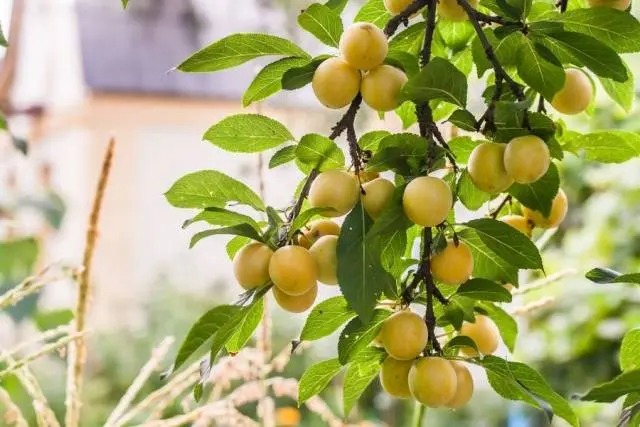
Features
Consider the main characteristics of the cherry plum variety Soneika.
Drought resistance, winter resistance
Cherry plum has good winter hardiness, endures frosty winters without loss. Sharp changes in temperature in February are dangerous for fruit buds.
As a progenitor of plums, a drought-resistant plant. However, watering will give a higher yield and juicy fruits.
Pollination, flowering period and ripening period
Like a plum, it requires a pollinator to produce fruit, and varieties that bloom at the same time as it are chosen. The best pollinator for Soniaka cherry plums is Eastern European varieties of plums. It blooms with white flowers in May. The fruits ripen at the end of August.

yield, fruiting
The variety is early-growing, high-yielding, up to 40 kg of berries are harvested from one tree. Ripening occurs almost simultaneously, which reduces the harvest time. The first fruits appear two years after planting.
Scope of fruits
Cherry plum fruits are used fresh. Well transported and stored for a long time. They make jams, compotes, jams, add to culinary products. It is used in cosmetology in the preparation of creams, shampoos and other cosmetics.
Disease and pest resistance
Hybrid plants have good resistance to harmful insects and diseases. The variety is vaccinated against clasterosporiosis.
Advantages and disadvantages
Advantages of the hybrid variety of cherry plum Soneika:
- High yield.
- Early start of fruiting.
- The tree is compact.
- Winter hardy.
- Drought resistant.
- Disease resistant.
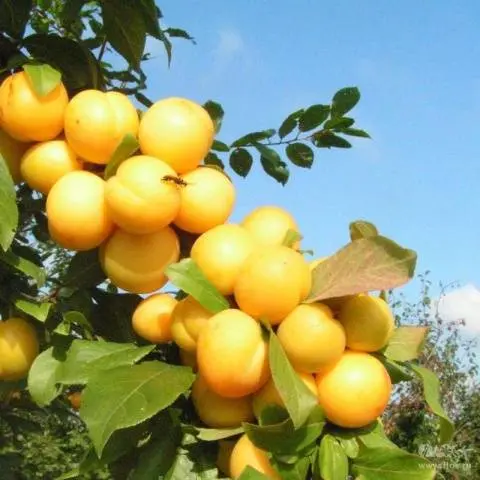
The disadvantages can be considered the need to establish supports for fruit-covered branches and the availability of other varieties for cross-pollination.
Features of landing
The plant requires certain conditions for good growth and fruiting.
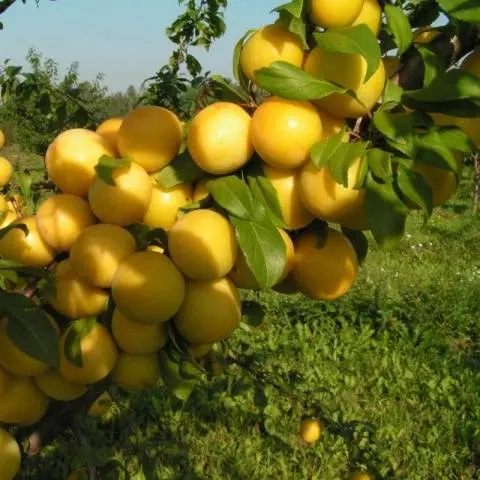
Recommended dates
The best time for planting cherry plum is spring, the plant has time to root before the onset of cold weather.
Autumn planting of cherry plum is acceptable, it should be no later than mid-September, a month before the onset of frost. At later dates, the roots will not have time to take root, and the plant may die.
Choosing the right place
plum, Soniaka cherry plum, loves a sunny place with protection from the northern winds. It can be any part of the garden, except for its northern zone. Low places with stagnant water and close groundwater are unacceptable. Acidic soil should be limed.
What crops can and cannot be planted next to cherry plum
The best neighbors will be stone fruits, as well as plants that are suitable for soil with low acidity. Pear and apple trees growing nearby act poorly.
Selection and preparation of planting material
For planting, one-year and two-year-old seedlings are used. The root system should consist of 5 main roots 30 cm long, be well developed. You can use grafted plants, they begin to bear fruit faster.
Before planting, inspect the roots, remove the sick and damaged, shorten the rest. Their color on the cut should be white.
The roots should be watered. They are placed in a solution with disinfectant additives to exclude possible diseases.
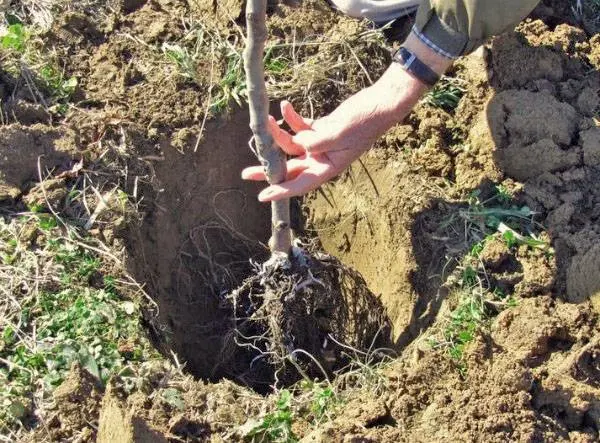
Landing algorithm
The tree is compact, 3 meters are left between seedlings, 4-5 meters are enough between rows.
Planting pits are prepared with a depth of 0,8 meters, their width is up to 0,7 m, depending on soil fertility. On poor soils, humus or compost is added to the pit, complex fertilizer is sprinkled. On acidic soils, ash, lime or dolomite are added.
On clay soils, drainage is made of crushed stone, brick or coarse sand. If the soil is sandy, add a layer of clay to the bottom of the pit.
The root neck of the cherry plum is not deepened, left at ground level. This is especially true for grafted seedlings, so that the wild shoots of the rootstock do not start growing and do not drown out the cultivated shoots.
Culture aftercare
Growing cherry plum Soniaka requires compliance with certain rules. Basic requirements for the care of culture:
- Watering.
- Top dressing.
- Pruning.
- Preparation for winter.
- Rodent protection.
Watering is required in spring and summer, up to three times per season. In the dry period, pour 4 liters under the cherry plum tree. Be sure to water in September to provide moisture to the root system for the winter.
In the first year, the nutrition introduced into the planting pits is sufficient. In the future, top dressing is applied in March, in the summer during the appearance and growth of ovaries. The last top dressing in August is needed to lay the buds of the next crop. It is better to make complex compositions, only in the fall to exclude nitrogen.
In the fourth year, cherry plum will require the application of organic fertilizers, as well as phosphorus-potassium fertilizers. They are added during the autumn loosening of the soil.
In the first year, the crown of the tree is formed. Leave up to 5 skeletal branches. In the future, branches of the second and third order and the density of the crown are formed.
The main pruning of cherry plums and plums is carried out in the spring before the start of sap flow in March and April. Summer pruning can only be sanitary, in which dry and unnecessary branches are removed.
To get a visual representation of the tree pruning process, you can watch the video:
The cherry plum variety Soneyka is winter-hardy, but requires some preparation for winter. Young seedlings spud and mulch with humus. For them, you need to organize a shelter from rodents. To do this, the trunk is wrapped with burlap, covered with spruce branches.
Diseases and pests, methods of control and prevention
The cherry plum variety Soneyka is resistant to many diseases, but they still exist.
Disease or pest | Characterization | Methods of struggle |
Spotting perforated | The appearance of brown spots on plum leaves, the formation of holes in them. Further, the disease passes to the fruits and branches. The bark cracks, gum disease begins
| Treatment of the tree with a 1% solution of Bordeaux liquid or Hom preparation before flowering and after and three weeks before fruit picking. Remove plant debris promptly |
Kokkomikoz | The appearance of powdery pink plaque on the leaves, drying of the fruit near the plum | Treatment of plants with Bordeaux liquid in spring and autumn, treatment of tree trunks in autumn |
Moniliasis | The branches darken, the leaves dry up and fall off, the fruits become covered with rot. | In the spring, before the buds swell, spraying with a 3% solution of Bordeaux liquid, in the summer and after harvesting, use a 1% solution |
fruit mite | Damages leaves and fruit buds, causes them to fall | Timely clean the branches from the old bark, in case of illness, use “Fundazol” or “Karate” when buds are formed |
Plum aphid | Damages shoots and leaves of plums and cherry plums, after which they dry out | Insecticide treatment of leaves, especially their lower part |
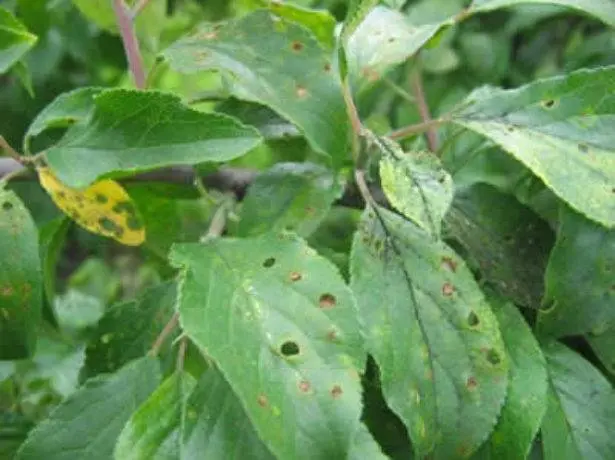
Cherry plum Soniaka, while retaining the useful qualities of plums, has a pleasant taste. The hybrid variety is resistant to disease, has a compact shape. Beautifully blooming in early spring, the tree will decorate the entire garden.
Reviews
Reviews of cherry plum Soneyka indicate that the tree is popular with gardeners.









